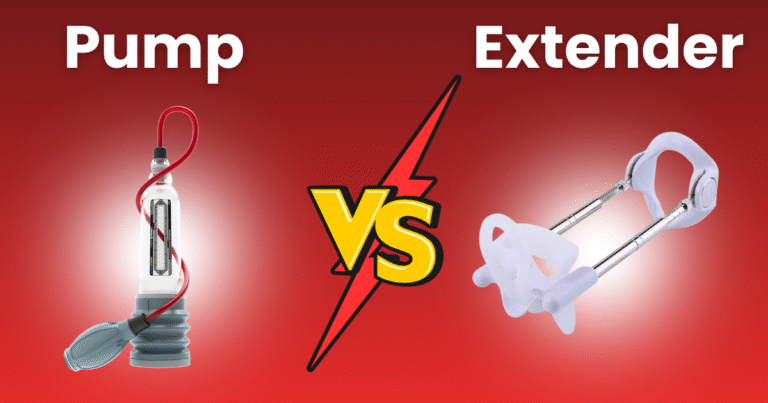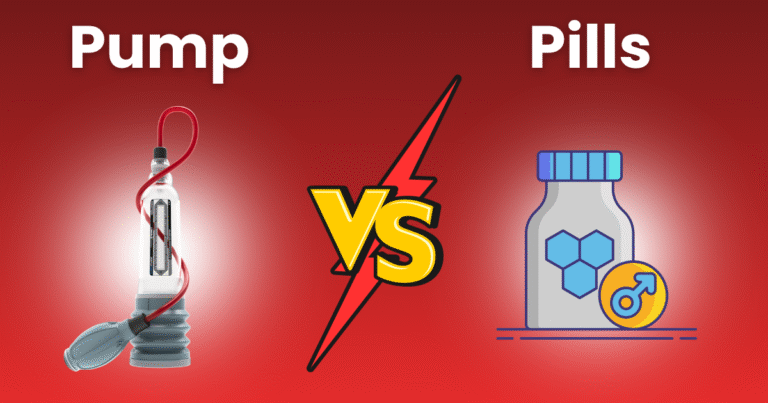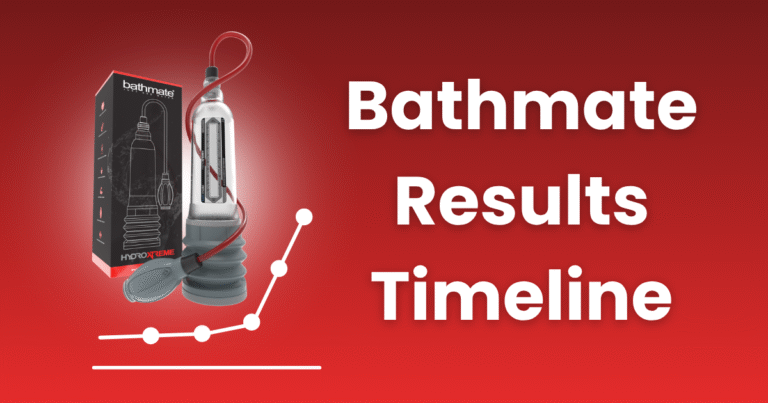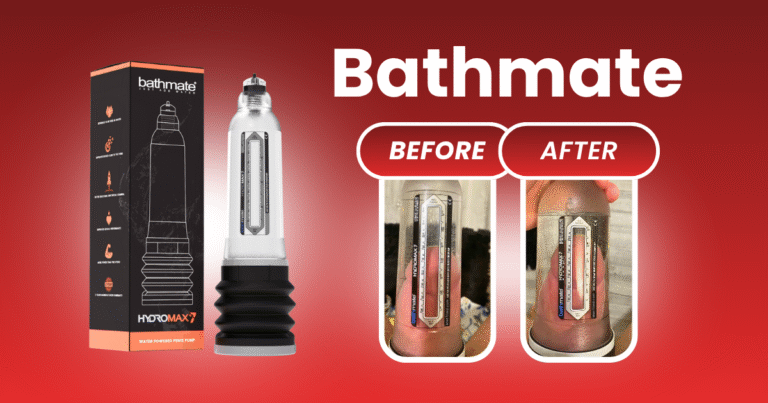Bathmate for Peyronie’s Disease: Can Hydro Pumps Help Straighten Curvature?
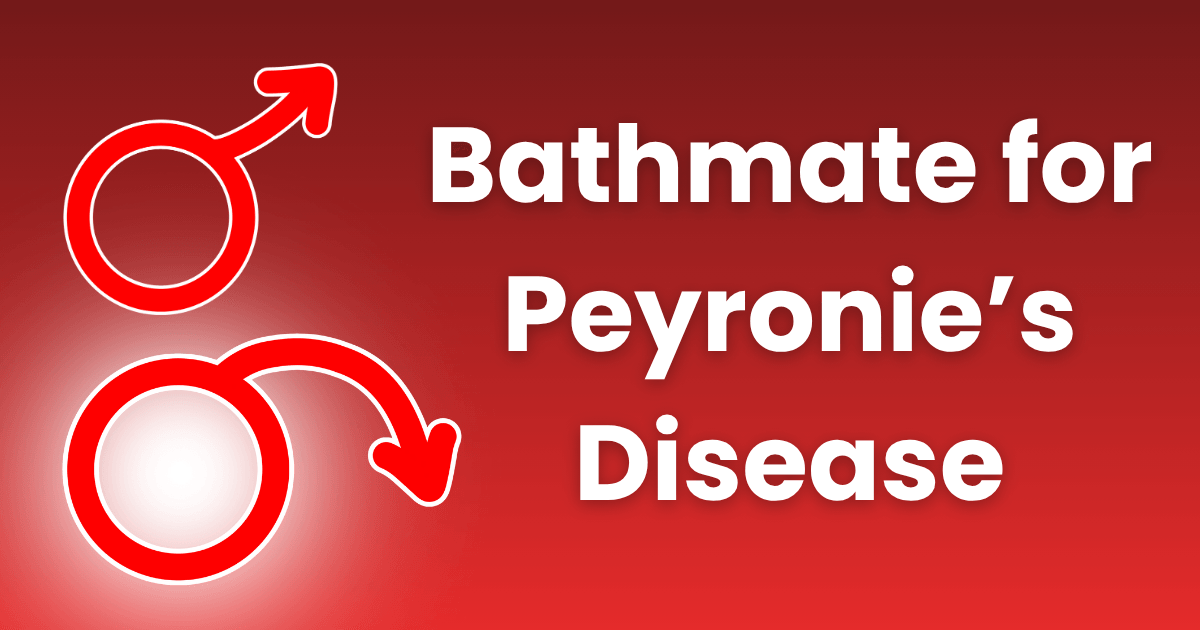
Peyronie’s disease affects approximately 1 in 10 men, causing penile curvature, pain during erections, and often significant psychological distress. While traditional treatments range from oral medications to surgery, many men seek non-invasive alternatives like vacuum therapy devices.
Bathmate hydropumps, primarily marketed for enhancement, have gained attention as a potential tool for managing Peyronie’s disease. But can these water-based vacuum devices actually help straighten penile curvature? This comprehensive analysis examines the scientific evidence, physiological mechanisms, and real user experiences to provide clarity on this important question.
Clinical evidence suggests that vacuum therapy, including Bathmate hydropumps, may help manage Peyronie’s disease through controlled stretching of fibrotic tissue and improved blood flow. While not a cure, studies show modest improvements in curvature (5-20° reduction) and pain relief in many users. Results vary based on disease stage, severity, and consistent use. Bathmate should be considered a complementary approach rather than a primary treatment for severe cases.
Understanding Peyronie’s Disease
Before examining Bathmate’s potential benefits, it’s important to understand the condition itself.
What Causes Peyronie’s Disease?
Peyronie’s disease develops when fibrous scar tissue (plaque) forms inside the penis, typically following trauma or injury. This scar tissue:
- Creates a thickened, inelastic area within the tunica albuginea (the fibrous sheath surrounding erectile tissue)
- Prevents normal expansion during erection
- Causes the penis to bend toward the affected side
According to the American Urological Association, Peyronie’s disease progresses through two distinct phases:
- Acute/Inflammatory Phase: First 6-18 months, characterized by active inflammation, pain, and progressive curvature changes
- Chronic/Stable Phase: After 18+ months, when inflammation subsides, pain typically resolves, and curvature stabilizes
Dr. Laurence Levine, a leading Peyronie’s disease specialist, notes: “Understanding which phase a patient is in significantly impacts treatment recommendations and expected outcomes.”
Common Symptoms and Impacts
Peyronie’s disease manifestations include:
- Curvature (typically 30-60 degrees, though can be more severe)
- Pain during erections (primarily in acute phase)
- Erectile dysfunction (in approximately 70% of cases)
- Shortened penis length
- Psychological distress (reported by over 80% of patients)
- Relationship difficulties and reduced quality of life
How Vacuum Therapy Affects Penile Curvature
Vacuum therapy devices like Bathmate may influence Peyronie’s disease through several mechanisms:
Mechanical Tissue Remodeling
- Controlled Stretching: The vacuum creates even pressure that gently stretches the inelastic plaque tissue.
- Collagen Reorganization: Regular stretching may help remodel collagen fibers within the plaque, potentially reducing contracture.
- Mechanotransduction: Cellular response to mechanical forces can trigger biochemical processes that modify tissue structure.
According to a 2019 study in the Journal of Sexual Medicine, “Controlled mechanical stretching of fibrotic tissue can lead to collagen remodeling and improved elasticity through mechanisms similar to those observed in other tissue expansion applications.”
Vascular Effects
- Improved Blood Flow: Enhanced circulation may reduce inflammation and promote healing.
- Tissue Oxygenation: Better oxygenation supports healthier tissue remodeling.
- Reduced Hypoxic Damage: Regular engorgement prevents the hypoxic (low oxygen) environment that can worsen fibrosis.
Dr. Paolo Gontero, urologist and researcher, explains: “Vacuum-induced erections increase oxygen saturation in the corpora cavernosa, potentially creating a more favorable environment for plaque remodeling and preventing further fibrosis.”
Prevention of Shortening
- Regular Stretching: Counteracts the contractile forces that cause penile shortening.
- Maintenance of Length: Preserves existing length by preventing further contraction.
- Potential Restoration: Some studies suggest partial length recovery with consistent use.
Clinical Evidence for Vacuum Therapy in Peyronie’s
Several clinical studies have examined vacuum therapy for Peyronie’s disease:
Key Research Findings
- Raheem et al. (2010) conducted a study of 31 men with stable Peyronie’s disease using vacuum therapy:
- 67% reported reduced curvature (5-25° improvement)
- 51% reported increased penile length (0.5-1 cm)
- 83% reported satisfaction with the treatment
- No significant adverse effects were reported
- Levine et al. (2014) evaluated vacuum therapy as part of a multimodal approach for 74 patients:
- Mean curvature reduction of 15.2° with combined therapy
- Vacuum therapy contributed significantly to outcomes
- Greater benefits observed in early intervention cases
- Chung et al. (2020) conducted a systematic review of non-surgical Peyronie’s treatments:
- Vacuum therapy showed “moderate evidence” for curvature improvement
- Most effective in mild to moderate cases (curvature <45°)
- Better outcomes when started in early chronic phase
- Recommended as adjunctive therapy alongside other treatments
- Moncada et al. (2019) studied water-based vacuum systems specifically:
- Water-based systems provided more even pressure distribution
- Reduced risk of focal pressure points that could worsen plaque
- Comparable efficacy to traditional air-based systems
- Higher comfort ratings leading to better compliance
Limitations of Current Research
Important limitations in the current research include:
- Relatively small sample sizes in most studies
- Few studies specifically on water-based systems like Bathmate
- Limited long-term follow-up data
- Variability in protocols and measurement methods
Dr. Gerald Brock, Professor of Surgery at Western University, notes: “While evidence supports vacuum therapy as a component of Peyronie’s management, larger controlled trials are needed to establish optimal protocols and patient selection criteria.”
Bathmate vs. Traditional Peyronie’s Treatments
How does Bathmate compare to established Peyronie’s treatments?
Bathmate vs. Oral Medications
| Factor | Bathmate | Oral Medications (e.g., Pentoxifylline) |
| Mechanism | Mechanical tissue stretching | Anti-inflammatory, anti-fibrotic |
| Effectiveness for Curvature | Moderate (5-20° improvement) | Limited (0-10° improvement) |
| Side Effects | Minimal (minor discomfort, potential bruising) | Varies (GI issues, dizziness, headache) |
| Best For | Stable phase, mild-moderate curvature | Early acute phase, preventing progression |
| Cost | One-time purchase ($100-$350) | Ongoing prescription ($30-100 monthly) |
| Evidence Quality | Moderate | Moderate |
Bathmate vs. Injections (Xiaflex)
| Factor | Bathmate | Collagenase Clostridium Histolyticum (Xiaflex) |
| Mechanism | Mechanical stretching | Enzymatic breakdown of collagen |
| Effectiveness for Curvature | Moderate (5-20° improvement) | Significant (20-34° improvement) |
| Invasiveness | Non-invasive | Minimally invasive (injections) |
| Side Effects | Minimal | Potential bruising, swelling, pain |
| Best For | Mild-moderate stable phase | Moderate-severe stable phase |
| Cost | One-time purchase ($140-$300) | Very high ($25,000+ for full treatment) |
| Insurance Coverage | Rarely covered | Often covered with diagnosis |
Bathmate vs. Traction Devices
| Factor | Bathmate | Penile Traction Devices |
| Mechanism | Vacuum pressure | Continuous low-tension stretching |
| Usage Time | 15-20 minutes daily | 3-8 hours daily |
| Comfort | Generally comfortable | Can be uncomfortable for extended wear |
| Evidence for Peyronie’s | Moderate | Moderate to strong |
| Curvature Improvement | 5-20° | 10-30° |
| Best For | Those who can’t commit to long daily usage | Those willing to commit to extended daily wear |
Bathmate vs. Surgery
| Factor | Bathmate | Surgical Correction |
| Invasiveness | Non-invasive | Highly invasive |
| Effectiveness | Moderate | High (70-90° correction possible) |
| Risks | Minimal | Significant (ED, numbness, shortening) |
| Recovery Time | None | Weeks to months |
| Best For | Mild-moderate cases, surgery-averse patients | Severe cases (>60° curvature), failed conservative management |
| Cost | Low | Very high |
According to the American Urological Association Guidelines, vacuum devices are recommended as a second-line or adjunctive therapy for Peyronie’s disease, particularly for patients with stable disease who wish to avoid invasive treatments.
Proper Usage Protocol for Curvature Improvement
Based on clinical studies and expert recommendations, the following protocol may optimize Bathmate use for Peyronie’s disease:
Frequency and Duration
- Optimal Frequency: 5-7 sessions per week
- Session Duration: 15-20 minutes total (three 5-minute intervals with brief breaks)
- Minimum Treatment Period: 12 weeks
- Optimal Treatment Period: 24+ weeks
Specific Peyronie’s Protocol
- Preparation Phase (5 minutes):
- Warm water immersion (shower or bath)
- Gentle manual stretching in direction opposite to curvature
- Application of warm compress to plaque area (optional)
- Pumping Phase (15 minutes):
- Begin with moderate pressure for 5 minutes
- Release pressure completely for 2 minutes
- Second 5-minute session with slightly increased pressure
- Brief release
- Final 5-minute session
- Post-Pump Stretching (5 minutes):
- Gentle manual stretching in direction opposite to curvature
- Hold stretches for 30 seconds, repeat 4-5 times
Positioning Considerations
For optimal results with penile curvature:
- Position the penis within the cylinder in a way that gently counters the natural curve
- Ensure even pressure distribution throughout the cylinder
- Avoid excessive pressure that could cause discomfort or injury
- Maintain proper body positioning for comfortable use
Dr. Mohit Khera, Professor of Urology at Baylor College of Medicine, advises: “Consistency is key with vacuum therapy for Peyronie’s disease. Results develop gradually through regular tissue remodeling, not from occasional use.”
User Experiences and Case Studies
Real-world experiences provide valuable insights into Bathmate’s effectiveness for Peyronie’s:
Case Studies
Case 1: Moderate Dorsal Curvature (35°)
- 46-year-old with stable Peyronie’s (2 years post-onset)
- Used Bathmate Hydromax7 daily for 6 months
- Results: 15° reduction in curvature, improved erectile function
- Quote: “The improvement was gradual but noticeable. By month 3, my partner could see the difference, and sex became significantly more comfortable.”
Case 2: Lateral Curvature with ED (40°)
- 58-year-old with combined Peyronie’s and erectile dysfunction
- Used Bathmate HydroXtreme7 alongside oral ED medication
- Results: 10° curvature reduction, significant improvement in erectile function
- Quote: “The combination approach worked better than either treatment alone. The vacuum therapy seemed to enhance the medication’s effectiveness while gradually improving the curve.”
Case 3: Severe Curvature (65°)
- 52-year-old with severe, stable Peyronie’s
- Used Bathmate Hydromax9 for 4 months
- Results: Minimal curvature improvement (5°), but reduced pain and improved erectile function
- Quote: “It didn’t fix the curve significantly, but it helped with other aspects. I ultimately opted for surgery, but feel the Bathmate helped maintain function in the meantime.”
Analysis of User Forums and Communities
Examination of Peyronie’s support forums reveals:
- Approximately 60-70% of users report some degree of improvement
- Most successful cases involve mild to moderate curvature (<45°)
- Combined approaches (Bathmate + traction or medication) show higher satisfaction
- Users in stable phase report better outcomes than those in acute phase
- Psychological benefits frequently mentioned even when physical improvements are modest
Dr. Wayne Hellstrom, Professor of Urology at Tulane University, notes: “Patient-reported outcomes often include benefits beyond measurable curvature reduction, such as improved confidence and sexual function, which are important considerations in Peyronie’s management.”
Limitations and Considerations
Important limitations and considerations when using Bathmate for Peyronie’s include:
Medical Considerations
- Acute Phase Caution: May exacerbate inflammation during active/acute phase
- Pain Assessment: Should not cause significant pain during use
- Severe Curvature: Limited effectiveness for severe curves (>60°)
- Hourglass Deformity: May be less effective for complex deformities
- Calcified Plaques: Reduced effectiveness with heavily calcified plaques
Practical Limitations
- Consistency Required: Results depend on regular, long-term use
- Gradual Progress: Improvements develop slowly over months
- Not a Standalone Treatment: Often most effective as part of a multimodal approach
- Individual Variation: Significant variability in response between patients
Safety Considerations
- Pressure Management: Excessive pressure could potentially worsen condition
- Discomfort vs. Pain: Mild discomfort is normal, but pain indicates improper use
- Medical Supervision: Should ideally be used under urological guidance
- Progression Monitoring: Regular assessment of curvature and symptoms advised
Dr. Georgios Hatzichristodoulou, a Peyronie’s disease specialist, cautions: “Vacuum devices should be used carefully in Peyronie’s disease, with attention to proper technique and appropriate pressure levels to avoid tissue trauma that could potentially worsen fibrosis.”
Who Should Consider Bathmate for Peyronie’s?
Based on clinical evidence and expert opinions, Bathmate may be most appropriate for:
Ideal Candidates
- Stable Phase Patients: Those beyond the active inflammatory phase (18+ months from onset)
- Mild to Moderate Curvature: Men with curvature less than 45 degrees
- Non-Calcified Plaques: Those with softer, more malleable plaques
- Combined ED and Peyronie’s: Men experiencing both conditions simultaneously
- Surgery-Averse Patients: Those seeking non-invasive alternatives
- Adjunctive Therapy Seekers: Men using multiple treatment approaches
- Preventive Focus: Those looking to prevent further deterioration
Less Ideal Candidates
- Acute Phase Patients: Those in the active inflammatory stage (first 6-18 months)
- Severe Curvature: Men with curvature greater than 60 degrees
- Heavily Calcified Plaques: Those with hard, calcified plaques
- Complex Deformities: Hourglass deformities or multiple plaques
- Pain-Dominant Symptoms: Those whose primary symptom is pain rather than curvature
- Unrealistic Expectations: Those expecting complete correction of severe curves
Dr. Jed Kaminetsky, Clinical Assistant Professor of Urology at NYU Medical Center, advises: “Patient selection is crucial for vacuum therapy in Peyronie’s disease. Those with stable disease, moderate curvature, and realistic expectations tend to experience the most satisfaction with this approach.”
Conclusion: The Evidence-Based Verdict
After examining the clinical evidence, physiological mechanisms, and user experiences, several evidence-based conclusions emerge regarding Bathmate for Peyronie’s disease:
Effectiveness Assessment
The evidence supports modest but meaningful benefits in appropriate candidates:
- Curvature Improvement: Typically 5-20° reduction in appropriate candidates, with better results in mild to moderate cases
- Additional Benefits: Improvements in erectile function, prevention of length loss, and potential psychological benefits beyond curvature reduction
- Timeframe: Requires consistent use over 3-6 months for optimal results
- Safety Profile: Generally safe when used appropriately, with minimal side effects compared to invasive treatments
Appropriate Expectations
Men considering Bathmate for Peyronie’s should maintain realistic expectations:
- Partial Improvement: Expect modest improvement rather than complete correction, particularly for severe curves
- Gradual Process: Results develop slowly over months of consistent use
- Individual Variation: Outcomes vary significantly based on disease characteristics and individual factors
- Complementary Approach: Often most effective as part of a comprehensive treatment plan
Optimal Implementation
For those proceeding with Bathmate for Peyronie’s management, evidence suggests:
- Medical Supervision: Ideally used under urological guidance with regular assessment
- Consistent Protocol: Adherence to a regular schedule (5-7 sessions weekly) for at least 12-24 weeks
- Proper Technique: Attention to positioning, pressure management, and complementary stretching
- Combined Approach: Consider as part of a multimodal treatment plan for enhanced results
Dr. Tom Lue, Professor of Urology at UCSF and renowned Peyronie’s researcher, summarizes: “Vacuum therapy represents a reasonable non-invasive option for appropriate Peyronie’s patients, particularly those with stable disease, moderate curvature, and realistic expectations. While not a cure, it offers a low-risk approach that may provide meaningful improvements in both physical and psychological aspects of this challenging condition.”
For men struggling with Peyronie’s disease, Bathmate hydropumps offer a scientifically supported, non-invasive option that may provide modest improvements in curvature and associated symptoms when used appropriately and consistently.
Have you used Bathmate or other vacuum therapy for Peyronie’s disease? Share your experience in the comments below.
Frequently Asked Questions
No, Bathmate should not be considered a cure for Peyronie’s disease. Clinical evidence suggests it may help reduce curvature (typically 5-20 degrees) and improve related symptoms in appropriate candidates, but complete resolution of significant curvature is uncommon, particularly in severe cases.
Dr. Irwin Goldstein, Director of Sexual Medicine at Alvarado Hospital, notes: “Vacuum therapy should be viewed as a management tool that may provide modest improvements rather than a curative treatment for Peyronie’s disease.”
Most urologists recommend against vacuum therapy during the acute/inflammatory phase (first 6-18 months) of Peyronie’s disease. During this period, the plaque is actively forming, and inflammation is present. Mechanical stress from vacuum pressure could potentially exacerbate inflammation or worsen plaque formation.
According to the 2015 American Urological Association Guidelines, vacuum devices are primarily recommended for stable phase disease rather than during active inflammation.
Based on clinical studies and user reports:
- Initial Changes: Minor improvements may be noted after 4-6 weeks of consistent use
- Measurable Results: Typically require 12+ weeks of regular use
- Optimal Results: Usually achieved after 24+ weeks of consistent application
A 2019 study in the International Journal of Impotence Research found that patients using vacuum therapy required an average of 16 weeks to achieve maximum curvature improvement.
Clinical evidence suggests that multimodal approaches often yield superior results. Potential combinations include:
- Bathmate + Oral Medications: Pentoxifylline or antioxidants may enhance tissue remodeling
- Bathmate + Traction Devices: Complementary stretching mechanisms
- Bathmate + Topical Therapies: May improve medication delivery to affected tissues
Dr. Eric Chung, Professor of Surgery at University of Queensland, recommends: “A combination of mechanical therapies with appropriate medical management often provides synergistic benefits in Peyronie’s treatment, particularly for moderate cases.”
Yes, addressing penile shortening is one area where vacuum therapy shows particular promise. Several studies have demonstrated that regular vacuum therapy can help:
- Prevent further shortening during disease progression
- Potentially restore some lost length (typically 0.5-1.0 cm)
- Improve perceived length by reducing the functional impact of curvature
A 2018 study in the Journal of Sexual Medicine found that 78% of patients using vacuum therapy reported subjective improvement in penile length after 6 months of treatment.
Insurance coverage varies significantly:
- Traditional VEDs: Sometimes covered with a prescription for diagnosed Peyronie’s disease
- Bathmate Specifically: Less commonly covered as it’s primarily marketed as an enhancement device
- Documentation: Medical necessity documentation from a urologist improves chances of coverage
- HSA/FSA: May be eligible for health savings account or flexible spending account reimbursement with proper documentation
Patients should consult their insurance providers directly and consider seeking a prescription from their urologist if pursuing coverage.
Xiaflex (collagenase clostridium histolyticum) is currently the only FDA-approved medication specifically for Peyronie’s disease. Key comparisons include:
- Effectiveness: Xiaflex typically produces greater average curvature reduction (20-34° vs. 5-20° with Bathmate)
- Invasiveness: Xiaflex requires multiple injections directly into the plaque; Bathmate is non-invasive
- Cost: Xiaflex is significantly more expensive ($25,000+ vs. $140-300 for Bathmate)
- Side Effects: Xiaflex carries risks of bruising, swelling, and rarely penile fracture; Bathmate has minimal side effects
- Accessibility: Xiaflex requires specialist administration; Bathmate can be used at home
Dr. Laurence Levine, a leading Peyronie’s disease specialist, suggests: “For appropriate candidates with stable, moderate disease, vacuum therapy offers a reasonable first-line mechanical approach before considering more invasive or costly interventions.”

